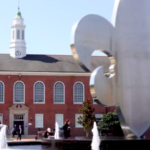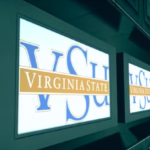Revolving Door Support Network
It’s probably a natural for the two institutions in which bias is most marked and documented—the media and academia—to come together in a time of stress, namely, the loss of support engendered by exposure of the above malady. This may happen here in the Foggy Bottom neighborhood in our nation’s capital at George Washington University.
“Given the 40 percent drop in prime-time viewers since 2009 for CNN, and the palpable need for programs similar to Crossfire, the School of Media and Public Affairs has an opportunity it cannot ignore,” an editorial in the GW Hatchet reads. “By reaching out to CNN and offering the Jack Morton Auditorium as a space that can be used for filming future programming, GW can raise its national recognition, provide further academic and networking opportunities for students, and perhaps even increase student pride and identity.”
Think about how low the self-esteem on campus must be if it is tied to CNN’s ratings. “Frank Sesno, the director of SMPA, is the logical choice of administrators to reach out to CNN and make such an agreement possible,” the editorial notes. “Sesno’s 21-year history with CNN as a White House correspondent, anchor and Washington Bureau Chief gives him the background, understanding and basic connections with the network that would enable him to present SMPA and the Jack Morton Auditorium as the best possible space for CNN to utilize.”
“By offering a package to CNN that could include studio space and readily available SMPA students eager for the experience of working on a nationally broadcast television program, Sesno could effectively forge another positive working relationship between GW and CNN.” In the words of a famous guy, “Yes he can!”
Just look at how he has fielded questions of news media bias.
Malcolm A. Kline is the Executive Director of Accuracy in Academia.




